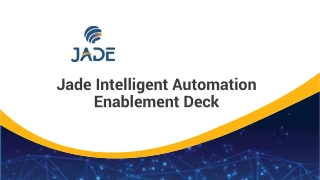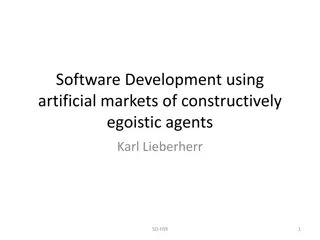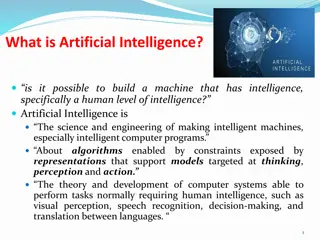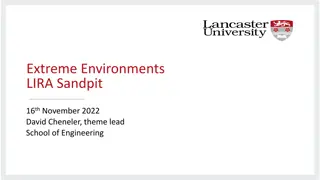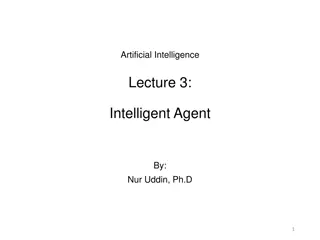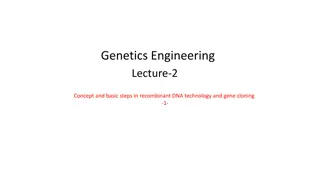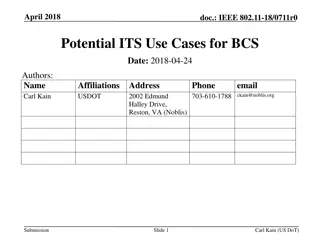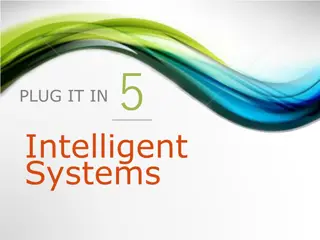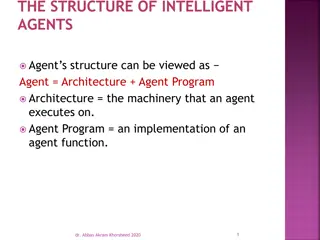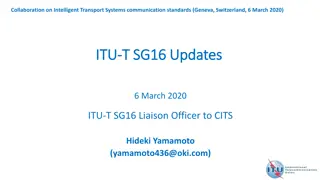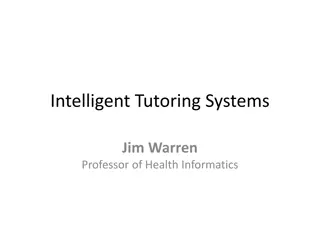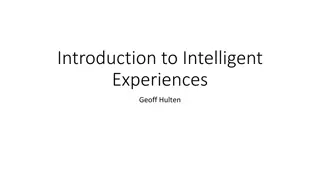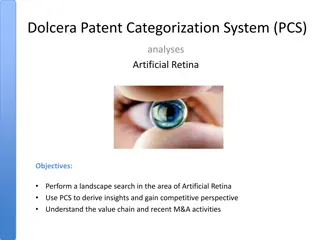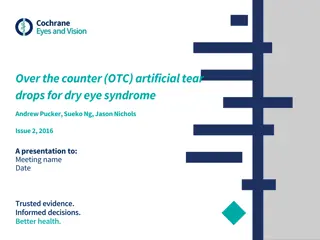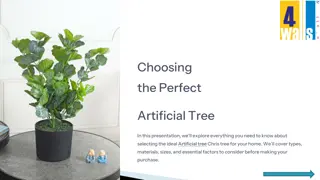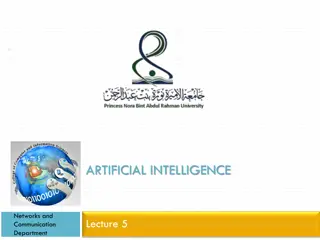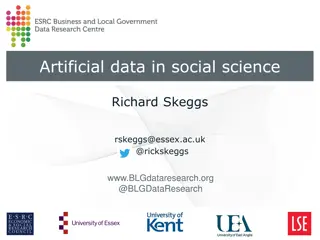
Fundamental to Artificial Intelligent IT-456 at Tishik University
Dr. Saman Mirza Abdullah leads the course on Problem-Solving Agents in Artificial Intelligence and Robotics at Tishik University's Information Technology department. The class covers topics such as search strategies, types of agents, goal-based agents, and the formulation of problems and goals. Students learn how agents can perform actions based on received information and explore various search techniques in the context of Smart Home applications.
Uploaded on | 2 Views
Download Presentation

Please find below an Image/Link to download the presentation.
The content on the website is provided AS IS for your information and personal use only. It may not be sold, licensed, or shared on other websites without obtaining consent from the author. If you encounter any issues during the download, it is possible that the publisher has removed the file from their server.
You are allowed to download the files provided on this website for personal or commercial use, subject to the condition that they are used lawfully. All files are the property of their respective owners.
The content on the website is provided AS IS for your information and personal use only. It may not be sold, licensed, or shared on other websites without obtaining consent from the author.
E N D
Presentation Transcript
1 Fundamental to Artificial Intelligent IT-456 Dr. Saman Mirza Abdullah Saman.mirza@tiu.edu.iq Artificial Intelligence and Robotic, Tishik University- Information Technology
Solving Problems by Searching Uninformed Search
Objectives and out comings The main objective of this class are: At the end of the class, students should be able to To define the Problem-Solving Agent (PSA). Formulate problems, and To Know the parts of PSA. Understand different types of search strategies. To learn how to formulate the parts of PSA. To discuss the searching process and strategy in PSA To identify Different types of search strategies. To discuss some examples on search strategies Artificial Intelligence - Tishik-IT 3
Agent can do actions based on receiving percepts. Types of agent (structure) reflexing the ability of the actions that the agent can do. Reminders Simple Reflex Agent Model Reflex Agent Goal Based Agent All these in Smart Home for energy saving Artificial Intelligence - Tishik-IT 4
Searching Problems Artificial Intelligence - Tishik-IT 5
Problem-Solving Agent is a goal-based agent that decides what to do by finding a sequence of actions that leads to desirable states To build PSA, we need to know Introduction What problem we have? (We need to formulate the Problem) What solutions we need? (We need to formulate the Goal) What search tool / technique we should follow? Artificial Intelligence - Tishik-IT 6
WE discussed Problem-solving Agent (Goal base) The following is needed to design any PSA Pervious Video Formulating the problem Defining the solution (Goal) Searching tool / Techniques. Artificial Intelligence - Tishik-IT 7
Goal based agent is better than other agents in performance, if the goal exist and well adapted. Touring vacancy adapting. Goal Formulation Goal formulation, based on the current situation and the agent's performance measure, is the first step in problem solving. The agent's task is to find out how to act, now and in the future, so that it reaches a goal state Artificial Intelligence - Tishik-IT 8
Goals can Simplify the search Goals help to organize the behaviors by limiting objectives. Goals should satisfy the performance measure. Goal Formulation Goal formulation is a process of identifying the desirable state of a problem as a solution. Solution for the tour in a city with flight time limitation Artificial Intelligence - Tishik-IT 9
Problem formulation is the process of deciding what actions and states to consider, given a goal. A problem is defined by four components Initial state is where an agent starts. In(s) Possible actions, A description of actions that available for an agent on a state s. Action (s) Transition model; A state that can be reachable from initial state after performing the action. Initial state + Possible actions + Reachable states = problem space. RESULT {Action (s)} = State (d). Problem Formulation Artificial Intelligence - Tishik-IT 10
Goal test determines if a state is a goal state. Or, if the state that found is among that defined as goal. In some cases goal are explicit (going to a city) Other cases, the goal is abstract property (Chess checkmate) Problem Formulation Path cost function, step cost c(s,a,d)= ? The solution quality measured by cost, and the optimal solution has the lowest path cost among all. Artificial Intelligence - Tishik-IT 11
We discussed Problem-solving Agent (Goal base) The following is needed to design any PSA Pervious Videos Formulating the problem Defining the solution (Goal) Searching tool / Techniques. Artificial Intelligence - Tishik-IT 12
Now, the goal and problem have been formulated. The questions is how to search for actions that leads to goal. Search is a process of looking for a sequence of actions that reaches the goal. Searching Process A search algorithm takes a problem as input and returns a solution in the form of an action sequence (goal). Finally, implementing the search (or the sequence of action) that recommended or suggested is called the execution phase of an agent. It calls the search procedure (algorithm) to find the goal or solutions. Artificial Intelligence - Tishik-IT 13
Infrastructure for search algorithms Infrastructure for search algorithms The structure that contains four components: n. STATE: the state in the state space to which the node corresponds; n.PARENT: the node in the search tree that generated this node; n.Acrion: the action that was applied to the parent to generate the node; n.PATH-COST: the cost. Artificial Intelligence - Tishik-IT 14
Searching for Solutions Starts with initial state Check whether it is goal. Check the expansion. Based on a strategy, the search do expansion. Read all frontiers. Check for the goal. Stop when reaches the leaf. Repeated state VS Redundant path Explored set = Closed set Graph VS Tree search A B C D G Artificial Intelligence - Tishik-IT 15
Searching strategies are the kind of rules that accordingly a state (or a node in a tree graph) will be identified for exploring. Repeated state, is a state (or node) that comes on the searching process (path) for more than one time. Searching Strategy Redundant path, is the path which comes in the solution stack for more than one time. It occurs when there are more than one path between states Artificial Intelligence - Tishik-IT 16
Completeness: Is the algorithm guaranteed to find a solution when there is one? Optimality: Does the strategy find the optimal solution? Evaluation of Search Strategies Time complexity: How long does it take to find a solution? Space complexity: How much memory is needed to perform the search? Artificial Intelligence - Tishik-IT 17
Type of search strategy Searches Uninformed Informed Breadth First search Depth First Search Depth limited Iterative Deepening Uniform Cost Bi-Directional search Artificial Intelligence - Tishik-IT 18
BFS It is very simple strategy. Root node is expanded first; then its successors, then their successors. Nodes at the same level are expanded, then nodes in the next level will start expanding. The expansion starts at the shallowest node. The process of expansion achieves through FIFO queue. New node will go to the back of FIFO, older nodes are shallower than new Artificial Intelligence - Tishik-IT 19
Completeness: Yes, if b is not infinite. Time complexity: O(b d), i.e., exponential in d (Rem: b is no. of branches) BFS Properties Space complexity : O(b d), keeps every node in memory Optimality: Yes, if cost = 1 per step; not optimal in general Artificial Intelligence - Tishik-IT 20
DFS Completeness: No, fails in infinite state-space Time complexity: O(b m) Space complexity: O(bm) Optimality: No it may never find the path to the goal! Artificial Intelligence - Tishik-IT 21
Iterative deepening search To avoid the infinite depth problem of DFS, we can decide to only search until depth L, i.e. we don t expand beyond depth L. Depth-Limited Search What of solution is deeper than L? Increase L iteratively. Iterative Deepening Search As we shall see: this inherits the memory advantage of Depth-First search. Artificial Intelligence - Tishik-IT 22
Iterative deepening search L=0 Artificial Intelligence - Tishik-IT 23
Iterative deepening search L=1 Artificial Intelligence - Tishik-IT 24
Iterative deepening search lL=2 Artificial Intelligence - Tishik-IT 25
Iterative deepening search lL=3 Artificial Intelligence - Tishik-IT 26
Class Ended 27 Artificial Intelligence - Tishik

